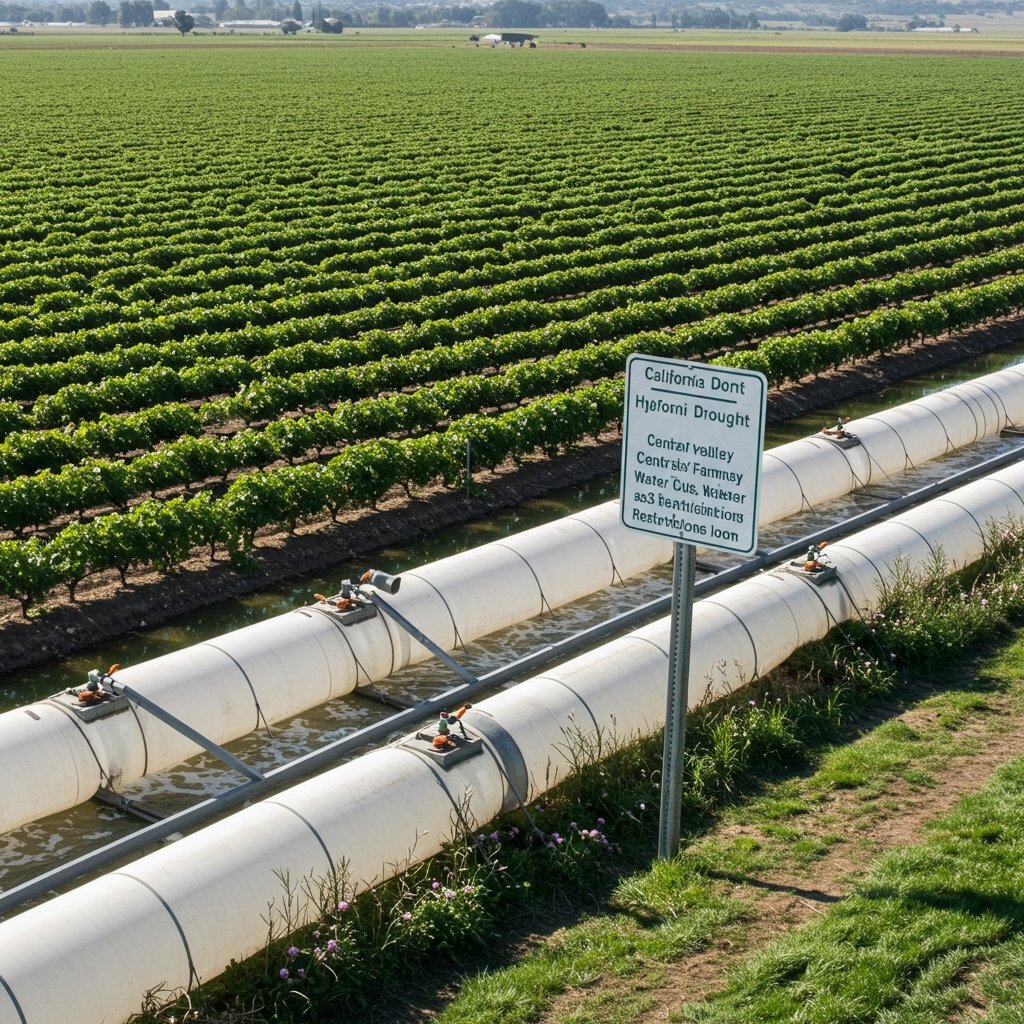California Drought Crisis Deepens with Severe Water Cuts for Central Valley Agriculture
Sacramento, CA — State officials on May 17 delivered a significant blow to California’s agricultural sector, announcing drastically stricter water allocation limits for farmers in several key Central Valley districts. Citing the persistent grip of drought conditions and alarmingly low reservoir levels across the state, the State Water Resources Control Board has implemented sweeping Tier 3 restrictions specifically targeting agricultural users south of the Sacramento-San Joaquin Delta.
The new regulations represent a severe reduction in available surface water supplies for irrigators in the designated areas. While the exact percentage of cuts can vary depending on specific water rights and historical usage, Tier 3 often implies a substantial curtailment, sometimes reducing deliveries to minimal levels necessary only for the preservation of permanent crops, or even less in severe cases. This marks a critical escalation from previous drought management tiers, reflecting the deepening water crisis facing California as it heads into the summer months and looks towards future agricultural seasons.
Rationale Behind the Drastic Measures
The decision by the State Water Resources Control Board was not made lightly. It comes as California continues to grapple with a multi-year period of below-average precipitation and dwindling snowpack, which is a critical source of summer water supply. Official reports leading up to the May 17 announcement highlighted that major reservoirs, essential for storing and distributing water to agriculture, municipalities, and the environment, remain at critically low levels. The Board’s action is a regulatory necessity triggered by these hydrological conditions, aimed at conserving limited water resources for essential human health and safety needs, environmental protection, and managing supplies in anticipation of continued dry patterns.
The affected regions in the Central Valley are among the most productive agricultural areas in the world, heavily reliant on surface water deliveries from state and federal projects. The implementation of Tier 3 restrictions underscores the severity of the current drought phase and the state’s need to balance competing demands on a finite and shrinking resource pool.
Significant Impact on Key Central Valley Crops
The newly imposed restrictions will have a particularly pronounced impact on farmers cultivating water-intensive crops. Among those most affected are growers of tree nuts, such as almonds, and forage crops like alfalfa. These crops require substantial and consistent irrigation throughout the growing season, and the significant cuts mandated by the Tier 3 restrictions pose an existential challenge for many operations.
For permanent crops like almonds, which represent a massive investment over many years before yielding returns, drastically reduced water allocations can force growers to make difficult decisions, including under-irrigating or even deciding not to water mature trees at all – a choice that can lead to tree mortality and loss of future productivity. Alfalfa growers, who often produce multiple cuttings per year, may see a substantial reduction in yields or be forced to fallow fields entirely due to lack of sufficient water.
Agricultural experts and state officials anticipate that these significant cuts will inevitably lead to potentially reducing yields for the 2025 harvest season across the affected Central Valley districts. The long-term implications for farm viability and regional agricultural output are a major concern.
Industry Reaction and Economic Concerns
The announcement was met with considerable apprehension from agricultural groups across the state. The California Farm Bureau Federation, a prominent industry organization, quickly voiced its concerns regarding the economic fallout of these restrictions. In statements following the May 17 decision, the Farm Bureau highlighted the severe strain the Tier 3 restrictions place on the economic viability for growers.
Farmers in the Central Valley operate on thin margins, and losing access to crucial irrigation water directly impacts their ability to produce crops, meet financial obligations, and sustain their businesses. The Farm Bureau warned that the inability of growers to produce anticipated yields could lead to widespread financial hardship, job losses in rural communities dependent on agriculture, and potentially force some farms out of business.
Furthermore, the California Farm Bureau Federation pointed to the potential ripple effects on the broader economy, including potential price increases for consumers in the coming months. Reduced supply of commodities like almonds, dairy products (which rely on alfalfa for feed), and other affected crops could translate to higher costs at the grocery store, adding to inflationary pressures faced by households.
Looking Ahead: The 2025 Season
The new regulations are set to take effect starting June 1, 2025. This effective date gives farmers a short window to prepare for the severe limitations on their water supplies. While some growers may have access to limited well water, the Tier 3 restrictions on surface water deliveries will fundamentally alter farming practices and crop planning for the upcoming season.
The implementation of these drastic measures underscores the precarious relationship between agriculture and climate in California. As drought conditions become more frequent and intense, the sustainability of current farming practices and crop choices in the Central Valley faces increasing scrutiny. The actions taken by the State Water Resources Control Board are a stark reminder of the need for long-term water management strategies, investment in water infrastructure, and the potential for significant shifts in agricultural production in the face of a changing climate.
The 2025 harvest season in the Central Valley will be closely watched as the agricultural sector navigates the unprecedented challenges posed by the Tier 3 water restrictions and the ongoing drought.



















